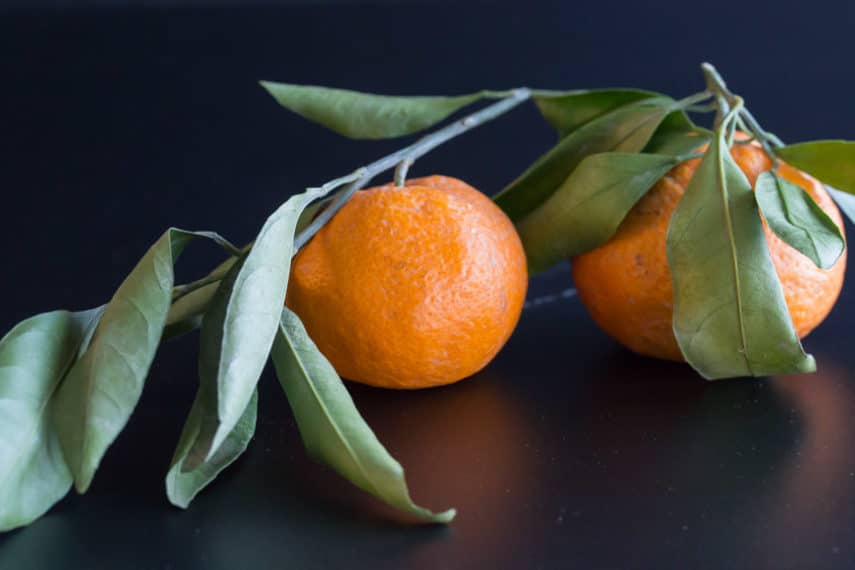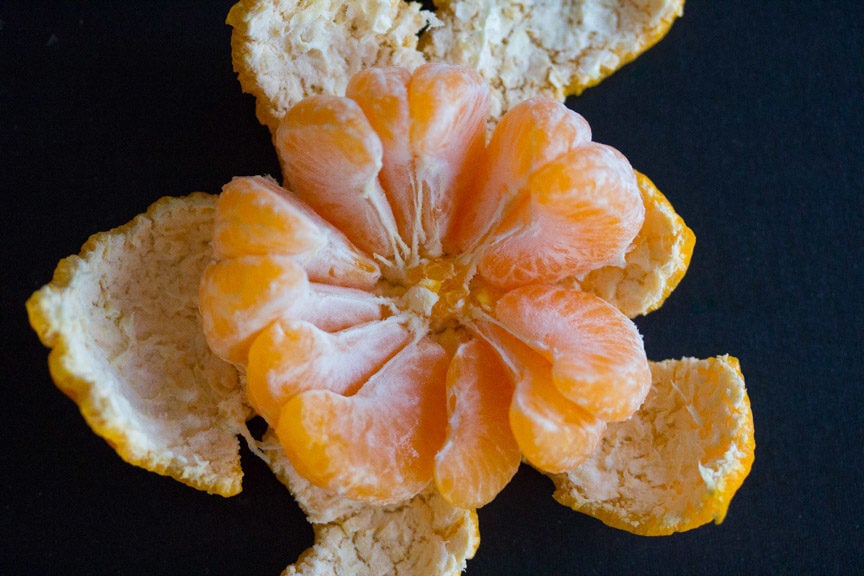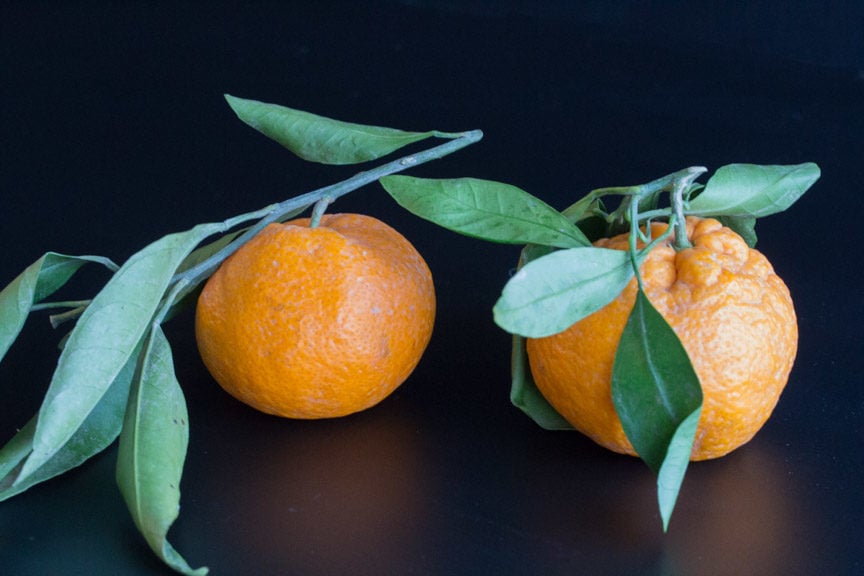About Mandarins
Monash University used to recommend a serving of 2 small, peeled mandarins (125 g), which had been lab tested as showing no FODMAPs. As of September 2022 they suggest a low FODMAP serving of 1 medium (90 g) mandarin.

All lab tests are accurate and represent what was tested at the time. One limitation of the Monash University and FODMAP Friendly apps is that only one data set can be shown at a time. In addition, the fruits and vegetables you buy literally cannot be the same as those tested at any time. Use the app entries as guides, and not absolutes.
Please read our article, When Monash University and FODMAP Friendly Lab Tests Differ, for a more explicit explanation.
Citrus reticulate. Mandarins are small citrus with a very easy to peel rind and extremely juicy and sweet flesh. They are usually seedless. They are pretty cold hardy, compared to the more common sweet orange, and while the tree itself is resistant to drought, the fruit are tender and will be damaged by extreme cold. They are considered native to south-eastern Asia and the Philippines and grown extensively in Japan, China and India.

How to Buy
Ripe mandarins are vivid orange in color, with a pebbly skin texture and will feel slightly soft; in fact the rind might feel loose. They should be heavy for their size.
How to Store
Refrigerate for up to 2 weeks.

How to Prep & Use
Eat mandarins chilled or room temperature. We like to enjoy these all by themselves – all the better to enjoy their juicy sweetness. They are great for tossing into a lunchbox. Also, since the season is short, they feel like a treat. As they are so easy to section, you can, however, incorporate into a fruit salad or vegetable salad. We love mandarin sections in kale salads. The peel can also be candied and particularly small ones are used to make the canned Mandarin oranges that are found in most supermarkets.

Varieties
There are 3 classes of Varieties: Class I: Mandarin; Class II: Tangerine; Class III: Satsuma. In the U.S. the Clementine variety of Tangerine is quite popular. It was introduced by the U.S. Department of Agriculture in Florida in 1909 and then brought to California in 1914.

Low FODMAP Recipes Featuring Oranges
- Low FODMAP Grilled Swordfish with Grilled Oranges & Fennel
- Low FODMAP Ginger Cranberry Sauce with Tangerines
- Low FODMAP Orange Chicken and Broccoli Bowl
- Low FODMAP Citrus Slaw with Creamy Grapefruit Dill Dressing
- Fennel, Kale & Parsley Salad with Clementines & Olives
- Clementine Almond Cake – Gluten-Free, Dairy-Free & Low FODMAP

